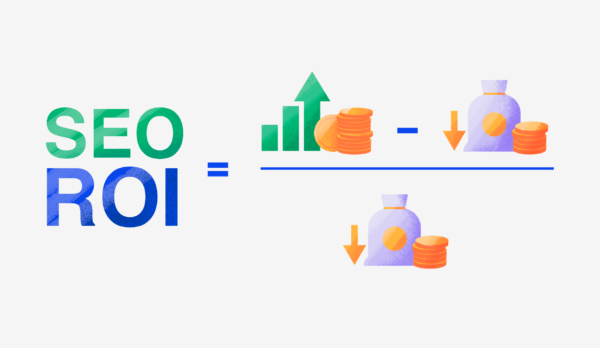If you’re navigating the vast landscape of digital marketing, you’ve likely heard the buzz about SEO.
But here’s the million-dollar question: How do you measure the success of your SEO efforts?
Fear not, because in this comprehensive guide, we’ll unravel the secrets of calculating the Return on Investment (ROI) of your SEO campaigns. Buckle up, because we’re about to embark on a journey that will not only demystify the process but also empower you to make data-driven decisions that elevate your online presence.
1. Understanding the Basics of SEO ROI:
Before we dive into the nitty-gritty, let’s lay the foundation. ROI is essentially the metric that gauges the profitability of an investment relative to its cost. In the context of SEO, it’s about determining how much revenue your organic search efforts generate compared to the resources invested.
Start by identifying your SEO goals – whether it’s increasing website traffic, boosting conversion rates, or enhancing brand visibility. Once you have clear objectives, you can measure the ROI more effectively.

2. Calculate Cost and Revenue:
Now, let’s crunch some numbers. Calculate the total cost of your SEO campaign, including expenses for tools, content creation, and any agency fees. On the flip side, quantify the revenue generated directly from your SEO efforts. This may involve tracking e-commerce sales, lead conversions, or other measurable outcomes.
For instance, if you spent $5,000 on your SEO campaign and generated $20,000 in revenue, your ROI would be (20,000 – 5,000) / 5,000 * 100 = 300%. A positive ROI indicates that your SEO investment is paying off.
3. Attribution Modeling:
Attributing revenue to specific SEO efforts can be tricky. Utilize attribution models to assign value to each touchpoint in the customer journey. This could include first click, last click, or multi-touch attribution models. By understanding how each interaction contributes to the conversion, you’ll gain insights into the effectiveness of your SEO strategy.
Consider a scenario where a user discovers your website through an organic search, explores your content through social media, and finally converts through an email campaign. Different attribution models would distribute credit differently, helping you understand the impact of each channel on your ROI.
4. Monitoring Key Performance Indicators (KPIs):
To measure the success of your SEO campaign, keep a close eye on relevant KPIs. Track changes in organic traffic, keyword rankings, bounce rates, and conversion rates. Tools like Google Analytics and SEO platforms can provide valuable data to assess the performance of your SEO efforts over time.
For example, if your organic traffic has increased by 50% after implementing SEO strategies, it’s a positive indicator. However, don’t forget to correlate these improvements with revenue data to understand the true ROI.
Examples:
Let’s bring it all together with a real-world example. Imagine a small e-commerce business investing $10,000 in an SEO campaign. Over the next six months, they experience a 25% increase in organic traffic and a 15% boost in conversion rates. Consequently, their revenue jumps from $50,000 to $75,000 during this period.
To calculate the ROI:

This means the business earned $2.50 for every dollar invested in SEO.
Conclusion:
In the dynamic realm of digital marketing, understanding the ROI of your SEO campaigns is paramount. Armed with the knowledge of calculating ROI, you can make informed decisions, refine your strategies, and ensure that every dollar spent contributes to your bottom line.
Remember, the success of your online presence is not just about the numbers but about making strategic moves backed by data. As you embark on your SEO journey, keep refining and adapting your strategies based on the evolving digital landscape.
FAQs:
Q1: Can I calculate ROI for every SEO campaign?
Absolutely! Calculating ROI applies to any SEO campaign, whether you’re a small business or a large enterprise. Tailor your approach based on your specific goals and objectives.
Q2: How often should I evaluate SEO ROI?
Regular evaluations are key. Aim for quarterly assessments to stay proactive in adapting your strategy based on performance trends.
Q3: Are there tools to simplify SEO ROI calculations?
Yes, several tools, such as Google Analytics, SEMrush, and Moz, can streamline data collection and analysis, making ROI calculations more efficient.
Q4: What if my ROI is negative?
A negative ROI signals that your SEO efforts aren’t generating the expected returns. Analyze the data, identify weaknesses, and adjust your strategy accordingly.
Contact Us for Expert Assistance:
Feeling a bit overwhelmed or unsure about calculating the ROI of your SEO campaigns? Fret not!
We at Visual Kiwi are here to help. Our team of digital marketing experts specializes in delivering revenue-generating solutions tailored to your unique needs. Contact us today, and let’s elevate your digital presence together!
Conclusion:
In conclusion, understanding the ROI of SEO campaigns is not just about numbers; it’s about making strategic moves backed by data. As you navigate the dynamic world of digital marketing, remember that success is a journey, not a destination. Make informed decisions, refine your strategies, and watch your online presence soar to new heights.
And here at Visual Kiwi, we’re not just about theories – we deliver revenue-generating digital marketing solutions.
Ready to unlock your digital potential? Let’s chat!













